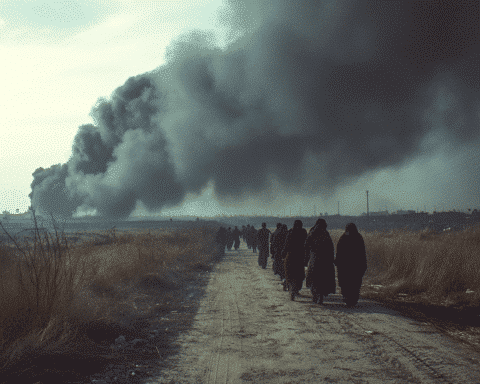The harrowing experiences of Nir Oz, an Israeli kibbutz, amidst the Israel-Gaza war, offer a stark illustration of the complex realities of conflict. Eyal Barad, an engineer, witnessed firsthand the terror of Hamas’ hostage strategy as he and his family, including his 6-year-old autistic daughter, hid in a safe room. The situation in Nir Oz, where over a third of the hostages in the entire conflict were from, starkly encapsulates the vulnerability and fear that gripped the region.
In the early hours of October 7, as Hamas militants rounded up hostages, Nir Oz became a focal point of this dire tactic. Families like the Barads were thrust into a nightmarish scenario, weighing unimaginable survival choices. Eyal Barad’s internal conflict, whether to silence his daughter’s cries to evade detection, reflects the profound desperation faced by the residents.
This hostage-taking was not only significant in scale but also marked by its execution, targeting a wide demographic from infants to the elderly. Danielle Gilbert, a political scientist, noted the rarity and strategic nature of such a broad targeting, underscoring the planned nature of these attacks.
The ordeal in Nir Oz, which saw about 20 of its residents killed, was part of a larger operation that took 240 hostages in total. The strategy seemed meticulously planned, as evidenced by Hamas’ instruction manuals and the efficient, albeit brutal, execution of the plan.
The hostage crisis in Nir Oz is a grim reminder of the complexities and horrors of war. It underscores the brutal reality of strategies employed in modern conflicts, where civilians become pawns in a giant geopolitical game. The story of Nir Oz is not just one of survival but also of the resilience and courage of those who endured unimaginable terror and the ongoing struggle for peace and security in a region long-torn by conflict.




